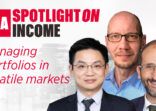CBH Asia has around 300 local clients in Hong Kong and a key client group is senior executives working in the financial services industry, Liem told FSA.
Within this group, portfolio management is being impacted by compliance.
“We select securities for portfolios as well, not only funds. But local professional clients have developed a stronger preference for funds because the compliance environment is getting tighter for banks and financial institutions.
“They are concerned about avoiding risks or the perception of risk from insider information, for example. It is a pretty obvious movement.”
Liem’s firm, the former TTG, in June 2015 was acquired by CBH (Compagnie Bancaire Helvétique), a family-owned, private bank headquartered in Switzerland. In March this year, after receiving post-acquisition approval from Hong Kong’s regulator, TTG was rebranded as CBH Asia. It has around 30 staff in Hong Kong and has recently added two relationship managers.
The mission now is implementing private bank infrastructure and IT systems, Liem said. “In the future we will start managing assets from Swiss headquarters on both an institutional or individual level.”
CBH Asia has had a strong year so far, Liem said. ”We are fully invested and although we are relatively balanced in asset classes we have been doing well. We already have better performance than [the full year] last year due to an overweight in growth strategies,” he said, though he declined to give figures.
Liem’s client portfolios are mainly discretionary mandates. He said the tension between apparent market calm and potential risk has led to a balanced approached.
“We are holding relatively balanced portfolios since the beginning of the year because beta is strong but valuations are expensive. So it’s a fight between greed and fear. People don’t want to reduce exposure because beta is strong yet they are concerned about a potential market collapse because of high valuations.”
The US dollar, which has been on a weakening trend in 2017, has also impacted portoflio performance, he said. “A weaker dollar is a key reason why equities are so strong this year — European, US, Asian, emerging market equities. Clients are still actually making good money but they don’t want to tilt currency exposure because of the potential rate hike for the US dollar.”
He cautioned that valuations are generally expensive and anything event that hits a nerve will likely cause drawdown. Key factors to watch are the US dollar and whether it continues to be weak and any change in interest rate projections from the US Federal Reserve.
“If the core assumption of the dollar changes and the Fed becomes more hawkish, the impact to the market will be more severe.”
In terms of portfolio exposure, Liem has been neutral on US investment grade bonds and on Asian and US equities with a tilt toward growth stocks. He is also neutral on Japan equities, holding large caps (without a value or growth tilt) and focusing on dividend growth stocks that will benefit from reforms.
Product choice
ETFs are used for selected asset classes depending on the value they add to portfolios, he said. For example, the firm would use US large cap ETFs, but the passive products add less value on the fixed income side.
“Even with UK equities, we could still identify an active manager outperforming on a consistent basis, but that is a lot harder for US large cap equities.”
Smart beta he looks at as an active strategy that is low cost, but his firm is not using the products and he prefers an active manager. “We don’t use investment vehicles or themes to time the market. Not because themes are inappropriate but more out of our business model to focus on core asset classes.”
He also said that liquid alts are useful for reduction of beta in the overall portfolio. He looks for Ucits multi-strategy and liquid alts managers.
“[These products] are more suitable vehicles for high net worth individual clients compared to traditional hedge fund structures.”
















